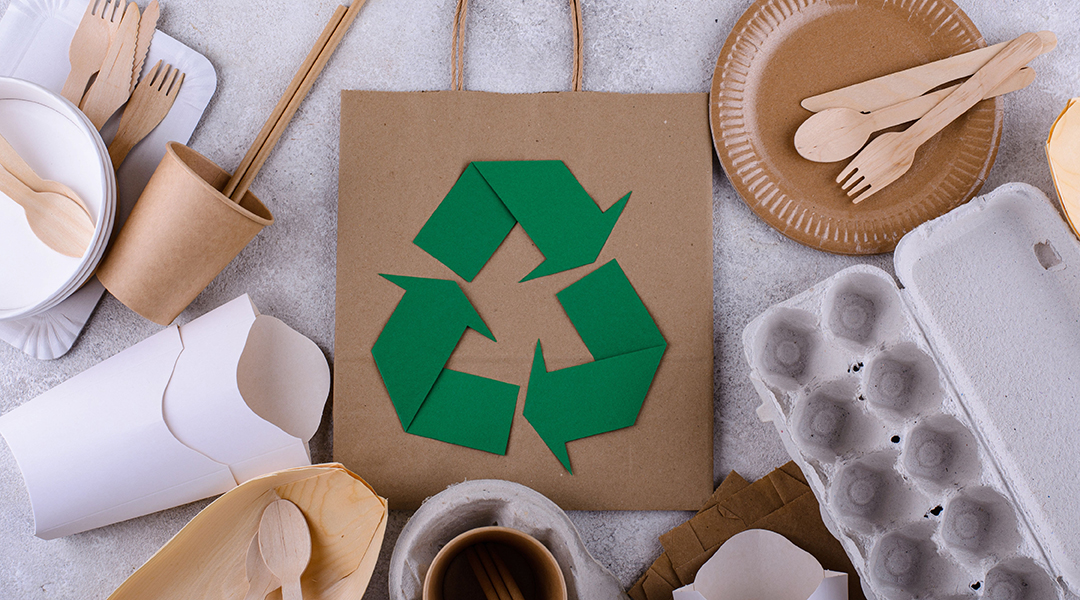
Globally, the packaging industry is on the brink of an environmental dilemma, under mounting pressure that must be dealt with swiftly and innovatively. Annually, a little more than 380 Mtons of plastic are made, with recycling success of less than 9%1. Packaging makes up to 45% of global landfill waste, and consequently has an unsustainable impact on the environment and generates substantial economic and ecological burdens.
New technologies in the packaging sustainability have tremendous potential to realize sustainable transformation. There has been a switch in the attention from traditional single-use materials, and now, the focus is on circular economy approaches also considering the material lifecycle and environmental impacts. Example of new biomaterials based on agricultural residues, mushroom roots or seaweed, and other degradable sources that are replacing traditional plastics. These materials provide biodegradability, decreased environmental impact, and generally better performance properties.
Global Impact Breakdown
- 8 million tons of plastic enter oceans annually
- Packaging represents 45% of global landfill waste
- Single-use plastics account for 50% of packaging materials
- Estimated $80-120 billion economic loss from plastic waste
Technological developments are promoting packaging innovation at breakneck speed. At present, smart packaging functions are covered by united sensors for evaluating the food spoilage, thermoresponsive materials, and high added value recycling based methods, which can transform the marine plastic waste materials into new packing materials. Businesses are building blockchain tracking infrastructures to promote transparency, accountability, and economic feasibility in recycling operations, as well as encouraging plastic collection and responsible waste management.
Emerging Sustainable Packaging Trends
1. Circular Economy Materials
The coming generation of packages is defined by the materials that will ultimately be used throughout the packages’ life cycles: .
- Post-consumer recycled content integration
- Materials engineered for infinite recyclability
- Advanced chemical recycling technologies
- Closed-loop manufacturing processes
2. Biomaterials and Natural Solutions
Innovative materials are revolutionizing packaging: Innovative materials are revolutionizing packaging:
- Plant-based packaging derived from agricultural waste
- Mycelium (mushroom root) packaging alternatives
- Seaweed and algae-based materials
- Biodegradable composites from renewable sources
3. Minimalist Design Strategies
Reduction becomes a primary design philosophy: Reduction becomes a primary design philosophy:
- Eliminating unnecessary packaging layers
- Designing for material efficiency
- Creating multi-functional packaging solutions
- Prioritizing lightweight, compact designs
- Breakthrough Packaging Innovations
Technological Advancements
1. Smart Packaging Technologies
- Embedded sensors for food freshness tracking
- Temperature-responsive materials
- Self-healing packaging materials
- Intelligent waste tracking systems
2. Ocean Plastic Transformation
- Advanced recycling technologies converting marine plastic
- Collaborative initiatives with coastal communities
- Blockchain tracking of recycling processes
- Economic incentives for plastic collection
Unilever is a case study on corporate sustainability of package materials. The company has defined high goals including the achievement of 100% recyclability, reusability or compostability of all packaging by 2025, and the decrease of virgin polymer content to 50%. Their approach demonstrates the leverage that the corporate base of an influential giant can exert to trigger systemic change and therefore precipitate endorsement of systemic solutions through strategic investment, technological innovation and the setting of transparent environmental goals.
Sustainable packaging is not only an environmental imperative for companies, but also a significant economic benefit. Corporations can realize cost reductions through material efficiency, enhance corporate image, achieve market access to ecologic friendliness customer segment and be in a position to charge higher prices for green offerings. SMEs can take the first steps by performing packaging audits, researching an economical alternatives, and ultimately shifting to the more sustainable solutions.
Practical Implementation Strategies
For Small to Medium Enterprises
- Conduct comprehensive packaging audits
- Explore cost-effective sustainable alternatives
- Collaborate with local recycling initiatives
- Educate customers about proper disposal
- Gradually transition to sustainable materials
For Large Corporations
- Develop long-term sustainable packaging roadmaps
- Invest in R&D for innovative materials
- Create cross-industry sustainability partnerships
- Implement advanced tracking and reporting mechanisms
- Develop internal circular economy expertise
Economic Considerations
Sustainable packaging is far from merely an environmental business but is a solid economic gain opportunity:.
- Potential cost savings through material efficiency
- Enhanced brand reputation
- Access to environmentally conscious market segments
- Reduced long-term waste management expenses
- Potential for premium pricing
Consumer education is crucial to the sustainable packaging ecosystem. Successful implementation requires clear disposal instructions, transparency about material composition, and interactive recycling guidance. Companies need to create integrated communication plans that inform and educate consumers about the environmental consequences of selecting packaging and inform consumers about simple and effective options with respect to making environmentally responsible and recyclable disposal and recycling decisions.
Packaging of the future is truly circular, innovative and has a deeply embedded connection to environmental care. As the threshold for sustainable packaging rises with growing technology capability and awareness by consumers, sustainable packaging will move from a niche idea to a mainstream business practice. Companies subscribing to this vision will not only minimize their environmental impact but will also create real value for customers, for their communities and for the planet.
Post Comment